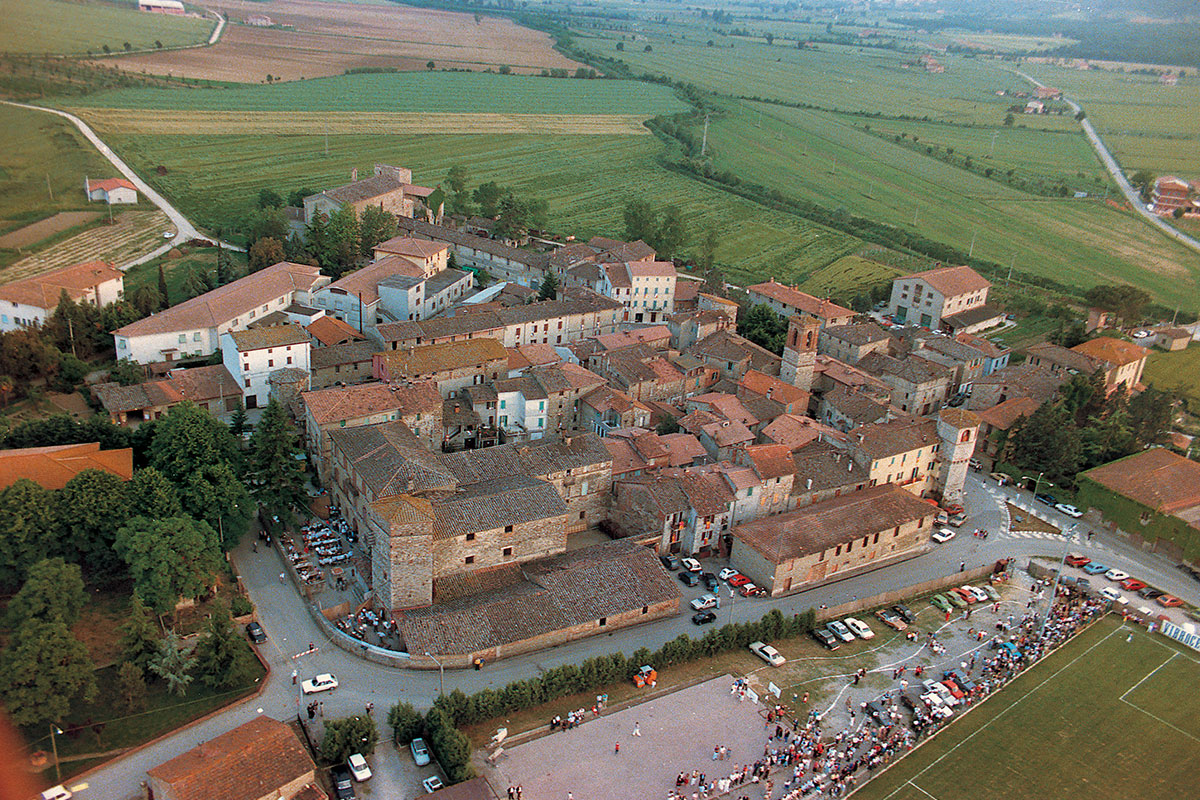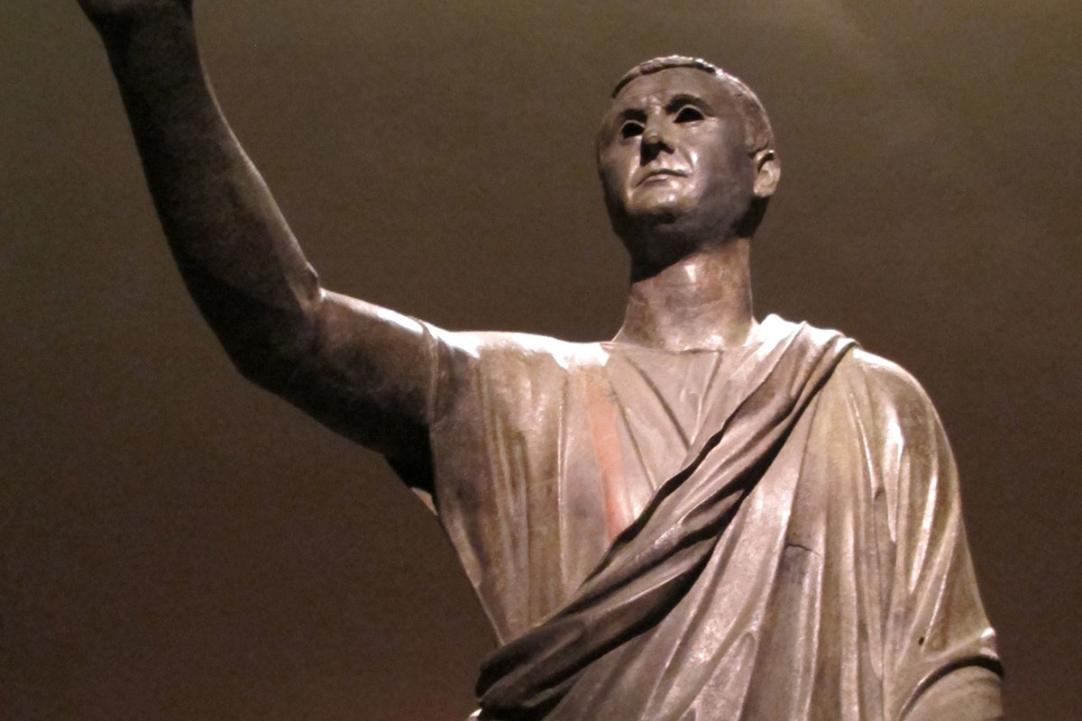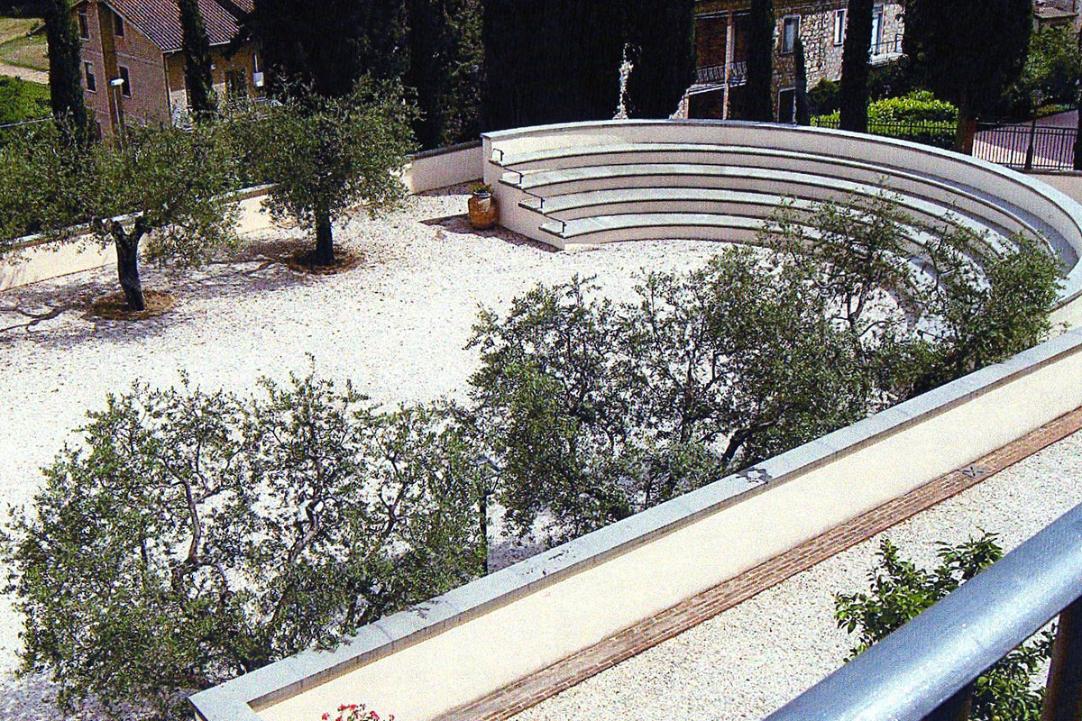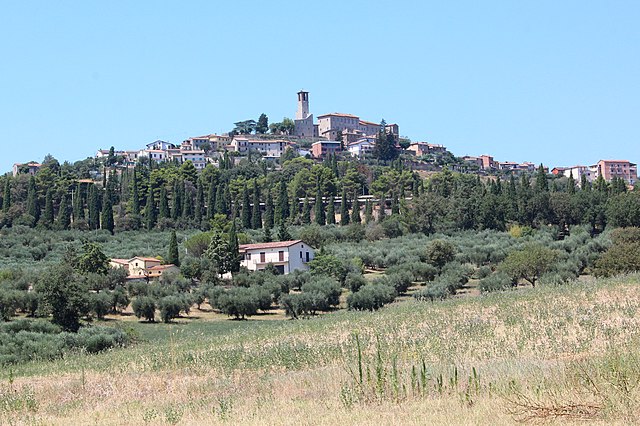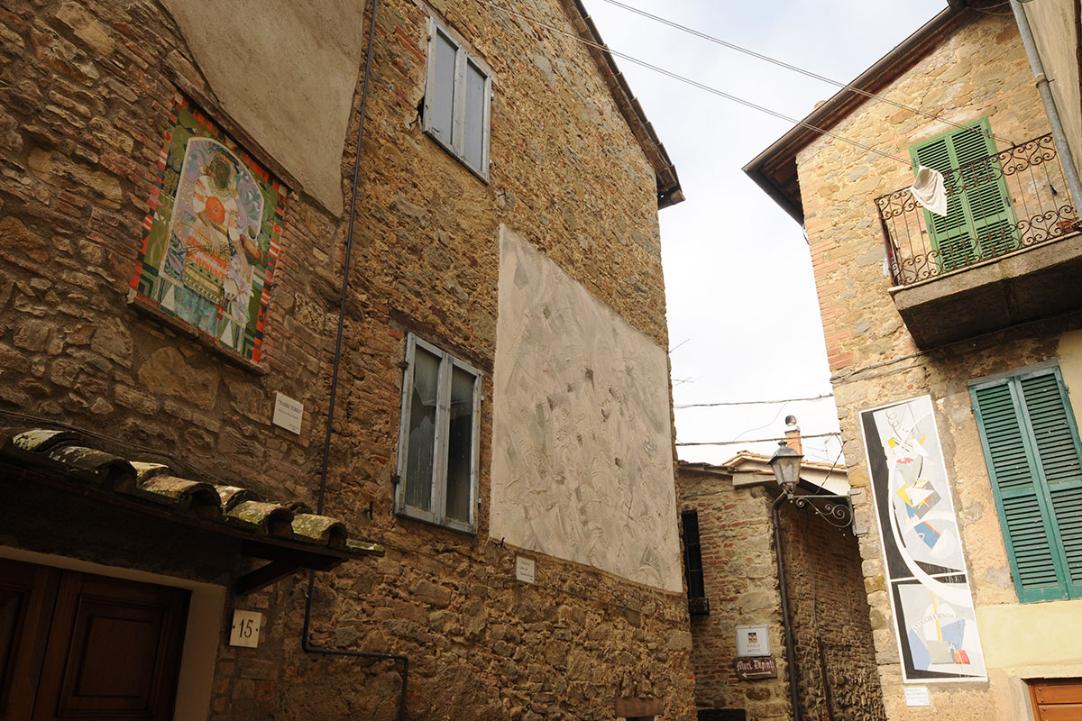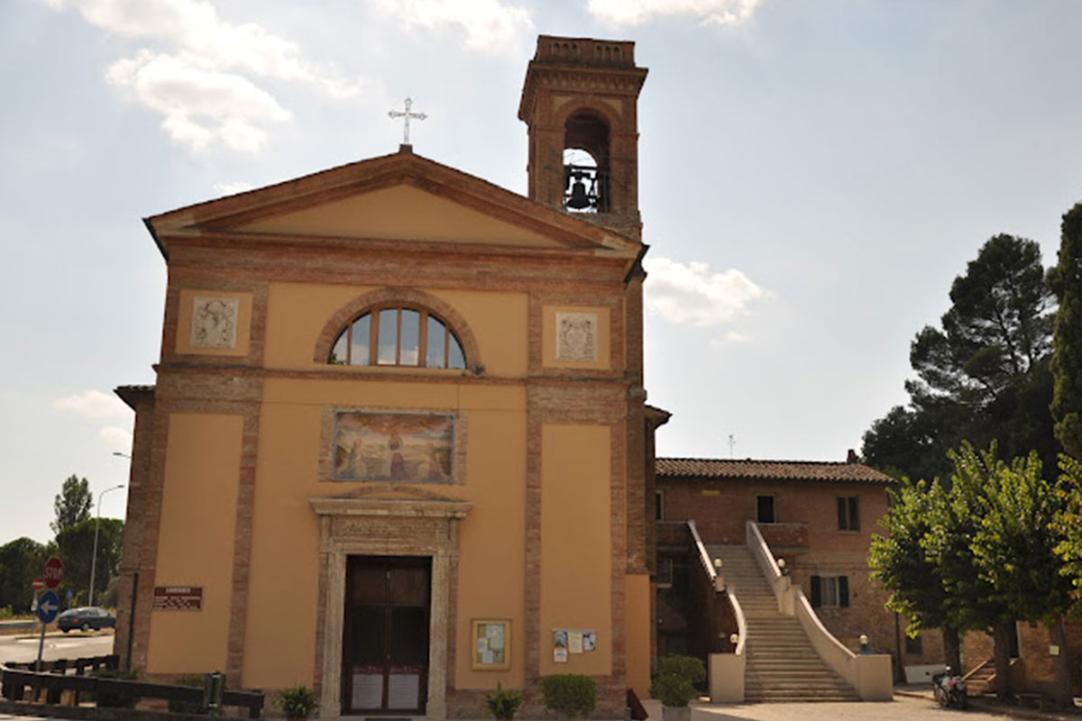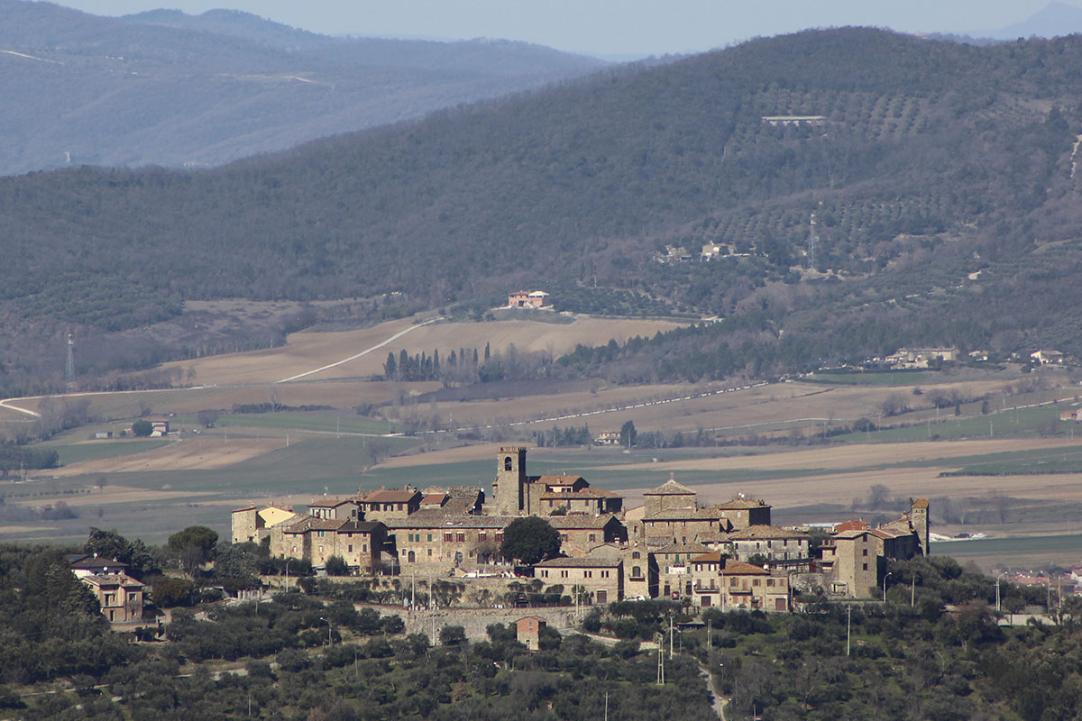| Distance | 39,3 km |
| Difference in level | 653m |
| Difficulty | Easy/Intermediate |
| Duration | 3 hours |
| Ground | Paved road, terrain |
| Recommended bike | gravel, mountain bike, trekking bike, e-bike |
| To view in the area | Pila, Capanne, Solomeo, Agello, Mugnano, Fontignano, Montepetriolo, Museo Paleontologico di Pietrafitta, Villa Guardabassi. |
| Staging points | 1- Pila; 2-Fontignano |
| Interchange | Routes 4 |
The first evidence of the village of Pila dates back to the Etruscan period: in 1556, in fact, a farmer discovered an Etruscan bronze statue, 180 cm high and dating back to the 1st century B.C., known as the Arringatore, representing the magistrate Aule Metele addressing the crowd. Several tombs and stone tumuli dating back to Roman times have also been found: the name of the village is said to derive from these constructions, called pilae. On the medieval past of Pila, or rather on its castle built as a control point for the entire territory west of Perugia, today stands the Villa Umbra complex, which houses the highly specialised school for civil servants. Beyond the town, you can also see the magnificent polychrome stained-glass windows of the parish church - built in 1898 in a pseudo-Gothic style - cast in the early 20th century by the Perugian painter Giuseppe Pennacchi.
Following an asphalt descent, we reach Castel del Piano, the birthplace of Maestro Luigi Cirenei, who composed, in 1929, La Fedelissima, the march of the Carabinieri Corps, still used today.
We then proceed to Capanne along the cycle path carved out of the track of the former Ellera-Tavernelle railway, decommissioned in the 1960s. Afterwards, we ascend to the medieval village of Solomeo, lapped by the waters of the Caina stream, which houses the Cucinelli Theatre and the annexes of the amphitheatre, gymnasium, nymphaeum and Neo-Humanistic Library.
Passing through the village and park of Solomeo, we head west, towards Agello, following the provincial road of the same name. The place name echoes the mythological love between the nymph Agilla and Trasimeno, son of the god Tyrrhenian, yet the castrum of Agello has its roots in the bloody battle of 217 B.C. between Hannibal and the Romans, who, thanks to it, were able to control the Montebuono pass, the only available link between Perugia and the western shores of Lake Trasimeno. Among the nobles of Agello who, in the Middle Ages, founded a consortium here, untied from the control of Perugia, the figure of St Peter Abbot stands out, founder of the cathedral of St Peter that stands in the heart of Perugia's historic centre.
Our tour continues in the direction of Mugnano. The town has a long history of rise and decline: its foundation dates back to Roman times, but it was abandoned until the year 1000, when Benedictine monks endowed it with an abbey, which also became a point of reference for the neighbouring towns. The castle was then built in its shadow to house the people who worked the reclaimed land. The monastery declined in the 14th century due to the shrinking number of monks and the castle was repeatedly remodelled and dismantled until the Napoleonic era. After the Second World War, decay began to take hold of the village and history would probably have repeated itself if, in the 1980s, the painter Benito Biselli had not called in a number of artists, with the approval of the Perugia Academy of Fine Arts, to paint the walls of the village. Today Mugnano is known as the village of painted walls, and there are over fifty of them.
We then reach Fontignano, the last home of the great Renaissance painter Pietro Vannucci known as Il Perugino. The painter was commissioned to paint the frescoes in the Church of the Annunziata: a Nativity and Adoration of the Shepherds in the high altar gallery (now at the Victoria and Albert Museum in London) and a Madonna and Child on the right wall. The plague caught him while he was working on the latter fresco. The marble tomb that now houses his remains, inside the church, dates back to 1940.
From Fontignano, follow the Spina provincial road to Montepetriolo, with its ellipsoidal castle that has housed a permanent nativity scene since 1942.
We close the tour by continuing on to Castiglione della Valle and Pilonico Materno until we skirt the Torre di Pila or Castello Guardabassi, a magnificent historic villa with an Italian-style garden that indicates the approach of the starting point.
MORE DETAILS ON KOMOOT
Progetto Around Perugia - realizzato con il contributo della Sottomisura 16.7 PSR per l'Umbria 2014-2022

























